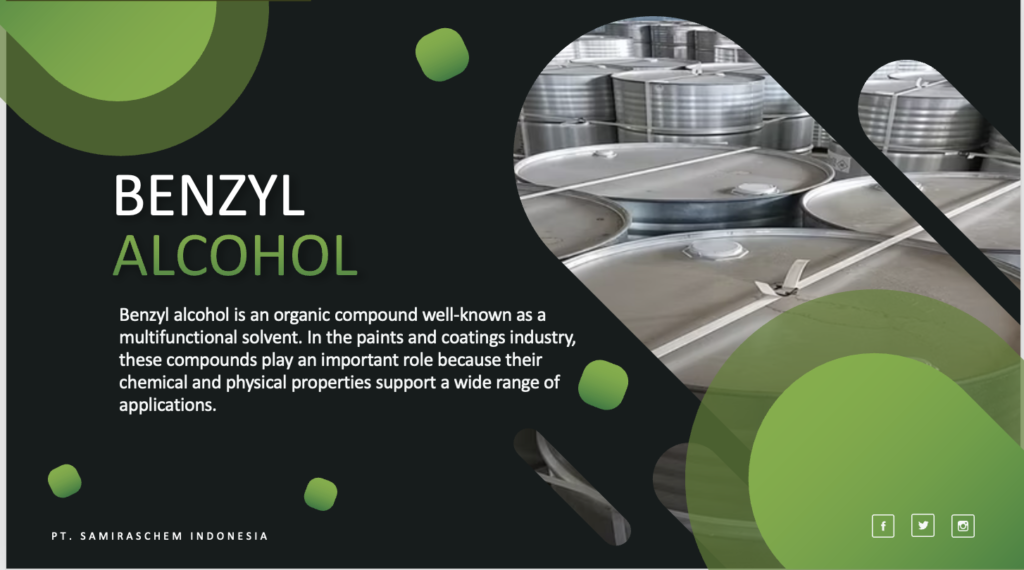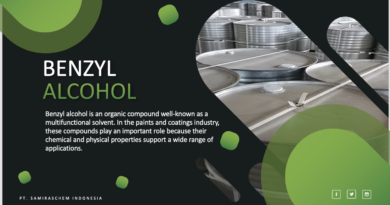benzyl alcohol structure
Benzyl alcohol structure with the chemical formula C₆H₅CH₂OH, is a simple organic compound made of an aromatic ring and an alcohol group. Its structure includes a benzene ring (C₆H₆) connected to a carbon group (-CH₂), which then attaches to a hydroxyl group (-OH). Because of this structure, benzyl alcohol has unique properties and widespread applications.
Molecular Structure Description – benzyl alcohol structure
- Benzene Ring:
The benzene ring forms the core of benzyl alcohol. It is a flat, six-carbon ring with alternating single and double bonds. As a result, the ring gains stability through resonance, making it chemically robust. Furthermore, the aromaticity of the ring contributes to its reactivity and industrial use. - Methylene Group:
A methylene group (-CH₂-) acts as the bridge between the benzene ring and the hydroxyl group. Specifically, this group links the two functional parts of the molecule, ensuring the combination of aromatic and alcohol properties. - Hydroxyl Group:
The hydroxyl group (-OH) attaches directly to the methylene carbon. Consequently, this group gives benzyl alcohol its ability to dissolve in polar liquids, form hydrogen bonds, and take part in chemical reactions. Additionally, the hydroxyl group makes benzyl alcohol reactive in processes like ester formation.
Key Structural Features – Benzyl alcohol structure
- Bonding:
Covalent bonds connect all parts of benzyl alcohol. The benzene ring, for example, shares electrons in a stable arrangement, while the methylene group and hydroxyl group are joined by simpler single bonds. Together, these bonds give the molecule its strong and stable structure. - Functional Group:
The hydroxyl group is the defining feature of benzyl alcohol. Therefore, it plays a major role in determining the compound’s reactivity. It allows benzyl alcohol to participate in oxidation, substitution, and esterification reactions, making it extremely versatile.
Physical Properties
- Molecular Weight:
Benzyl alcohol has a molecular weight of 108.14 g/mol, making it relatively light compared to more complex organic compounds. - Density:
At 20°C, its density is approximately 1.045 g/cm³, which is slightly higher than water. As a result, benzyl alcohol can be easily separated or combined with other substances in industrial processes.
Chemical Behavior
The structure of benzyl alcohol greatly affects how it behaves in different environments. For instance, the hydroxyl group allows it to form hydrogen bonds, which increases its solubility in polar liquids like water. On the other hand, the benzene ring introduces non-polar characteristics, which can reduce its solubility in some highly polar environments. Thus, benzyl alcohol strikes a balance between hydrophilic and hydrophobic properties, making it useful in a variety of situations.
- Oxidation: Benzyl alcohol reacts with oxidizing agents to form benzaldehyde or benzoic acid. This process is commonly used in chemical manufacturing.
- Ester Formation: Acids react with the hydroxyl group to produce esters like benzyl acetate. For example, benzyl acetate is widely used in perfumes and flavorings.
- Substitution Reactions: The benzene ring participates in substitution reactions, allowing functional groups to attach to it. Consequently, benzyl alcohol is important in creating more complex chemical compounds.
Applications in Industry
Benzyl alcohol is valued for its versatility and reliability in many industries. Its structure allows it to serve as a solvent, preservative, or raw material for creating other products. Some key applications include:
- In pharmaceuticals, a preservative to maintain product stability. Furthermore, its low toxicity ensures safety in medical and injectable products.
- In cosmetics, it works as a fixative to help fragrances last longer. Additionally, its mild and pleasant scent enhances the quality of many personal care products.
- In chemical production, it acts as a building block for making esters and ethers. Consequently, benzyl alcohol plays an essential role in industrial manufacturing.
Using Transition Words – Benzyl alcohol structure
Benzyl alcohol’s unique structure and properties make it an essential compound in various fields. For instance, the hydroxyl group gives it the ability to dissolve in polar liquids, while the benzene ring allows it to react with other chemicals. Moreover, the balance between its polar and non-polar characteristics enhances its versatility. Additionally, its low toxicity makes it safe for use in products such as medicines and cosmetics. Furthermore, benzyl alcohol is easy to handle because of its moderate density and stable structure. As a result, it has become a key ingredient in countless applications.
For example, its role in oxidation and ester formation highlights its importance in chemical reactions. Similarly, its use in creating aromatic esters like benzyl acetate showcases its value in perfumes and flavorings. Besides these applications, industries continue to find new ways to use benzyl alcohol due to its reactivity and safety. Consequently, it remains a highly sought-after compound. Finally, researchers are always exploring more innovative uses, ensuring that benzyl alcohol will remain a crucial part of industrial chemistry for years to come.






